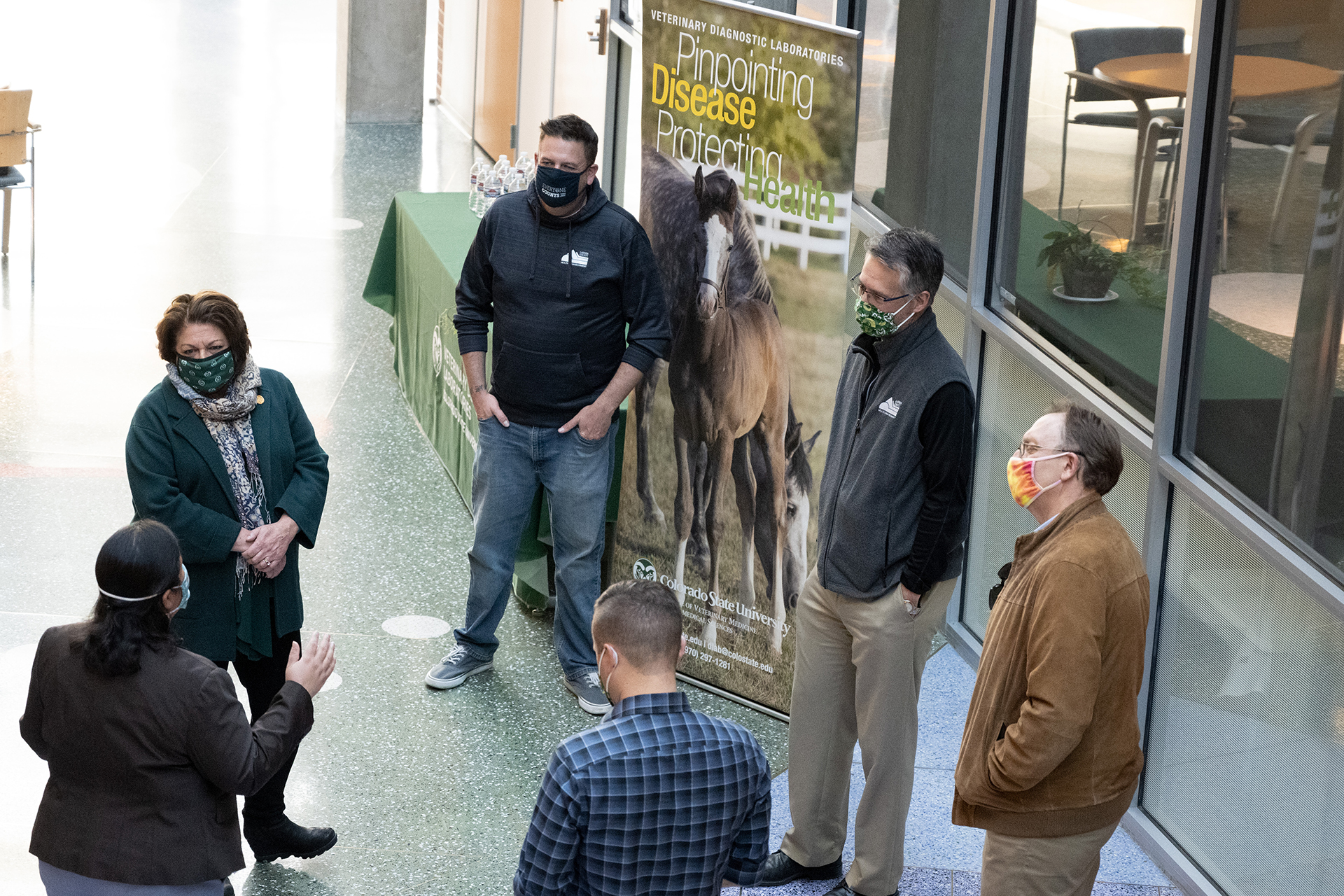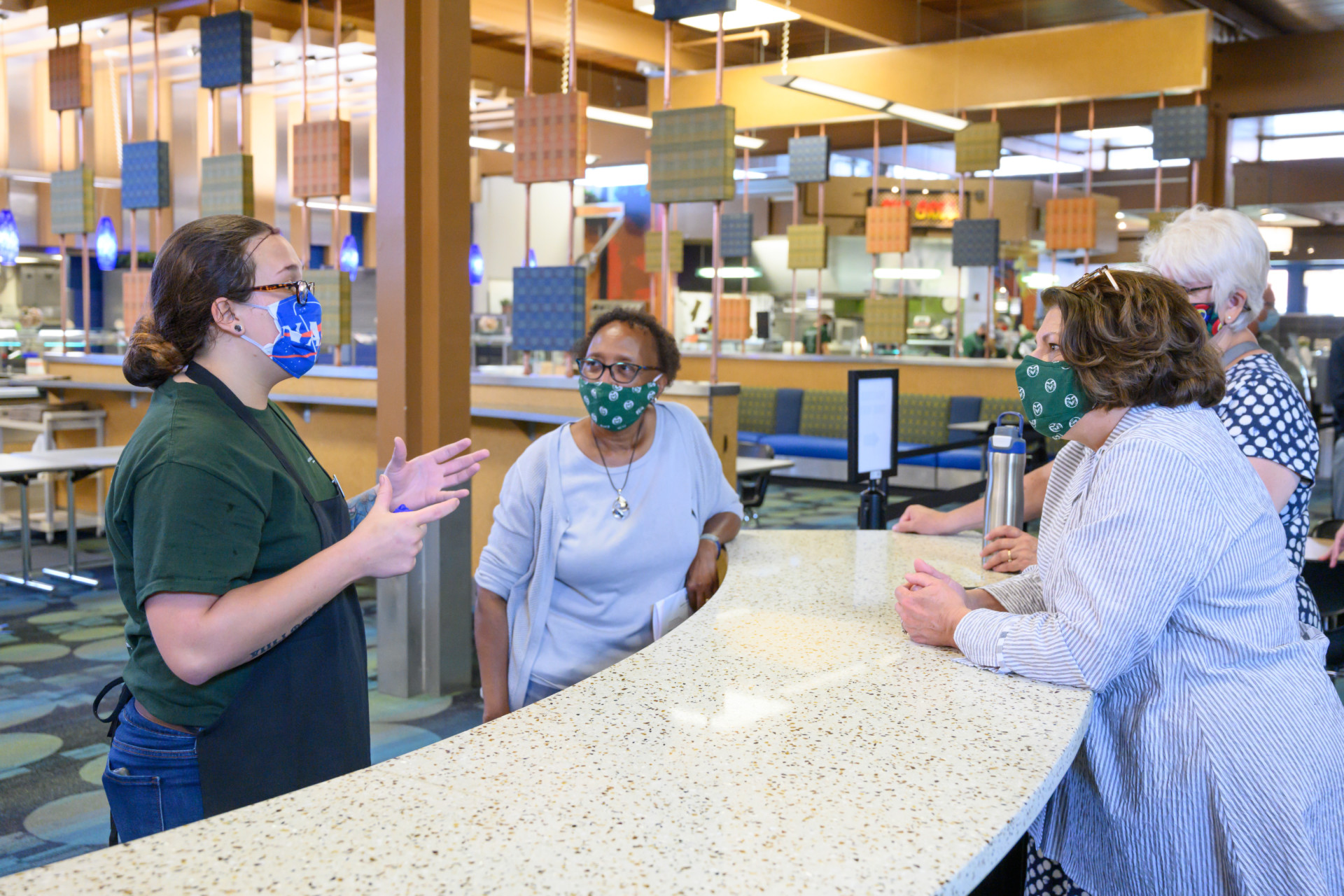Courageous Strategic Transformation
President Joyce McConnell discusses strategic planning at CSU story by Ann Claycomb published Feb. 22, 2021Photo by John Eisele/CSU Photography
Colorado State University President Joyce McConnell has had plenty of experience doing strategic planning, but that doesn’t necessarily make her a fan of the traditional process.
“Organizations tend to identify a fairly small group of people, usually leaders, to create their strategic plan,” she said. “Once they’re satisfied with it, they announce it with a big public splash and a website, then everyone puts the plan document into a drawer and goes on with what they were already doing.”
Even before she became president of CSU in July 2019, McConnell knew that was not how she would approach the strategic planning process for the university. As she puts it, she quickly learned that “this is an extraordinarily collaborative and engaged community. I’m not a top-down, ‘do it my way’ leader, I’m a consensus-builder, and I sensed that CSU was the same way from my very first encounters with faculty, staff and students here.”
To make clear her interest in a non-traditional, non-hierarchical approach to strategic planning, McConnell almost immediately began using the term “strategic transformation” instead, because “planning is just something you’re doing for some future date that may never come,” she said. “Transformation is really major change, change you can see and feel. That’s what I want us to commit to and what I think CSU is ready for.”
“Planning is just something you’re doing for some future date that may never come. Transformation is really major change, change you can see and feel. That’s what I want us to commit to and what I think CSU is ready for.”
— President Joyce McConnell
When robust, urgent conversations arose on campus around issues of race and racism shortly before McConnell’s first Fall Address in September 2019, she responded by urging the university community to prepare for “courageous” strategic transformation. The additional term was intended to signal CSU’s readiness to do more than “just react” to issues, McConnell said. “I learned from our students, faculty and staff that they felt we were being really reactive to issues when they rose to the top, but we weren’t going that extra step or being proactive to ask ourselves, ‘How can we make our campus a better place, a more equitable place, for everyone?’ I think doing that when there’s no immediate pressure to do so does take courage and that’s why I chose that word.”
The university had engaged in initial outreach and the solicitation of some input on strategic planning in 2018, through efforts led by the Provost’s Office — specifically the Office of Institutional Research — and the Center for Public Deliberation. The President’s Council on Culture was also focused on making sure that institutional culture would be considered in strategic planning efforts at that time. When then-President Tony Frank announced his intention to move exclusively into the chancellor role at the CSU System and CSU launched a search for a new president, the strategic planning process was put on hold to allow that new leader to settle into the role.
Strategic planning during a pandemic


President McConnell and Larimer County Department of Public Health Director Tom Gonzales visit CSU’s Veterinary Diagnostic Laboratories in November 2020, where COVID-19 test samples are being run. McConnell talks with a student employee in Braiden Hall in August 2020. Photos by William A. Cotton/CSU Photography
McConnell initially envisioned relaunching strategic planning — now courageous strategic transformation — within the first year of her presidency. She began meeting regularly with both members of her leadership team and local facilitator Chris Hutchinson, who has helped numerous colleges and divisions of CSU develop their strategic plans.
Then in March 2020, everything changed.
“To say that we had to pivot or put strategic planning on hold — those are just enormous understatements,” McConnell said. “We had to essentially mobilize a massive emergency response — and then sustain it for an unheard-of length of time. I’m incredibly proud of our COVID response, and in many ways, I think it prepared us to be even more purposeful and focused when we did get the chance to focus on courageous strategic transformation again. For one thing, we knew we could transform CSU, very quickly and with tremendous energy and dedication. That’s really powerful.”
At the beginning of the Fall 2020 semester, McConnell convened her Executive Leadership Team and the deans to pick up the transformation process again. Hutchinson agreed to facilitate and called on several other university experts to help his team: Martin Carcasson, director of the Center for Public Deliberation; Marsha Benedetti, director of Talent Development; Vice Provost for Faculty Affairs Sue James; and Vice Provost for Planning and Effectiveness Laura Jensen.
“We started with establishing trust and some shared language amongst the leaders,” Hutchinson said. “This was a group of people who came together to focus on the future even while they were all managing an ongoing crisis. They worked incredibly hard to listen to one another and go from small steps to really big, bold ideas. I think the CSU community will be inspired by what they’ve come up with and want to share.”
A ‘roadmap’ for the future

An aerial photo of campus in Summer 2020. Photo by Joe A. Mendoza/CSU Photography
What the university leadership has created over seven months of intensive visioning sessions is an initial framework that McConnell believes will provide an excellent “roadmap” for the CSU community to use in collaboratively developing a public-facing document. In many ways, she says, the development process has resembled the kind of research and learning at which CSU excels.
“We started by looking at a lot of our peer institutions’ plans,” McConnell said, “and we found a lot to admire. We also saw some ways that we wanted to differentiate our process and our hopes for our community. So for example, we listed our institutional values, which are the core of who we are, particularly focusing on equity, equality and justice. And alongside those we listed some things we’re calling ‘institutional imperatives,’ which are ways we believe we absolutely must act if we’re going to have the impact we want to have on the world.”
These Institutional Imperatives include being “agile, excellent, resilient, sustainable and transformative.” They are not the only aspect of CSU’s draft transformation framework that sets it apart from more traditional plans. The framework opens with a reaffirmation of CSU’s land-grant mission that adds a phrase acknowledging the university’s responsibility to “the indigenous people from whose lands we have benefitted.” It frames the aspirational purpose in terms of the CSU colors green (for the planet) and gold (for the people). And it also calls out several prerequisites to implementation, which McConnell describes as “absolutely key to our success.”
“We had really hard, really honest conversations as we created this document,” she said, “probably because we were so deeply aware of fiscal constraints and the other ways our institution was being tested by the pandemic. We agreed that it’s fairly easy to publicly say what you want to do and where you want to go, but it’s much harder — and more courageous — to call out the things you know could keep you from getting there. We called those out in this draft, and I think of them as transformation building blocks. We know we need to support our workforce, and even expand it in the coming years. Let’s say so. We know we need to commit to equity and to accountability in our HR processes. Let’s do it. I think this section of the framework may actually be the part I’m most excited for people to see, for that reason, because it’s honest and it’s brave.”
“We had really hard, really honest conversations as we created this document, probably because we were so deeply aware of fiscal constraints and the other ways our institution was being tested by the pandemic.”
— President Joyce McConnell
This spring, students, faculty, staff, alumni and donors will be given the opportunity to offer feedback on the draft courageous strategic transformation framework, through anonymous surveying and focused leader-led sessions held in all colleges and divisions. The feedback from these important constituencies will be used to further refine the framework before McConnell presents it to the Board of Governors at the scheduled May meeting, and then referenced further to build out CSU’s public-facing strategic plan once the Board approves the framework.
The strategic planning and visioning process for the university will also get a boost when Jenelle Beavers, the university’s new vice president for strategy, joins McConnell’s office this March. In this role, Beavers will work closely with leaders across the university to both implement the overarching strategic plan and help individual units—from colleges and divisions to departments and offices — tailor and implement their specific strategic plans.
“We used the term ‘co-create’ frequently as we developed this framework,” McConnell said, “and I remember at one point someone asking, ‘Is that really what we mean?’ We all looked at each other on our Zoom screens and just nodded, because it really is what we mean. I’m so excited for what’s next.”